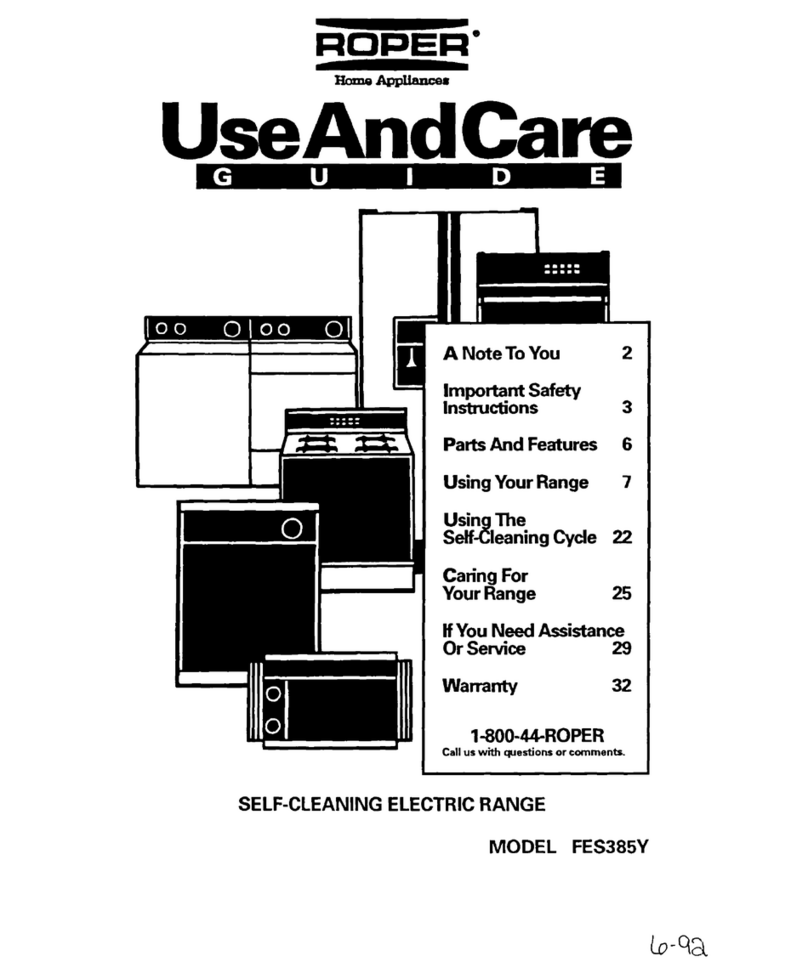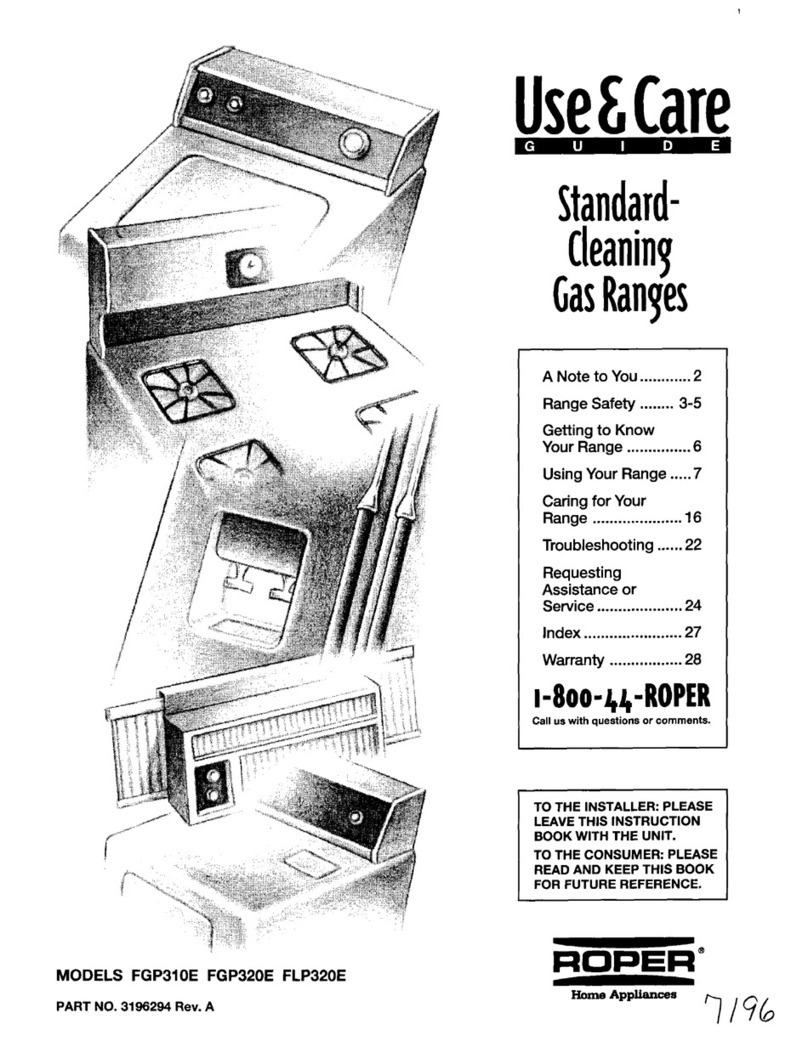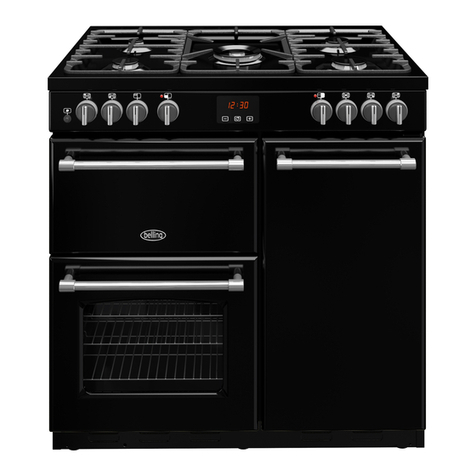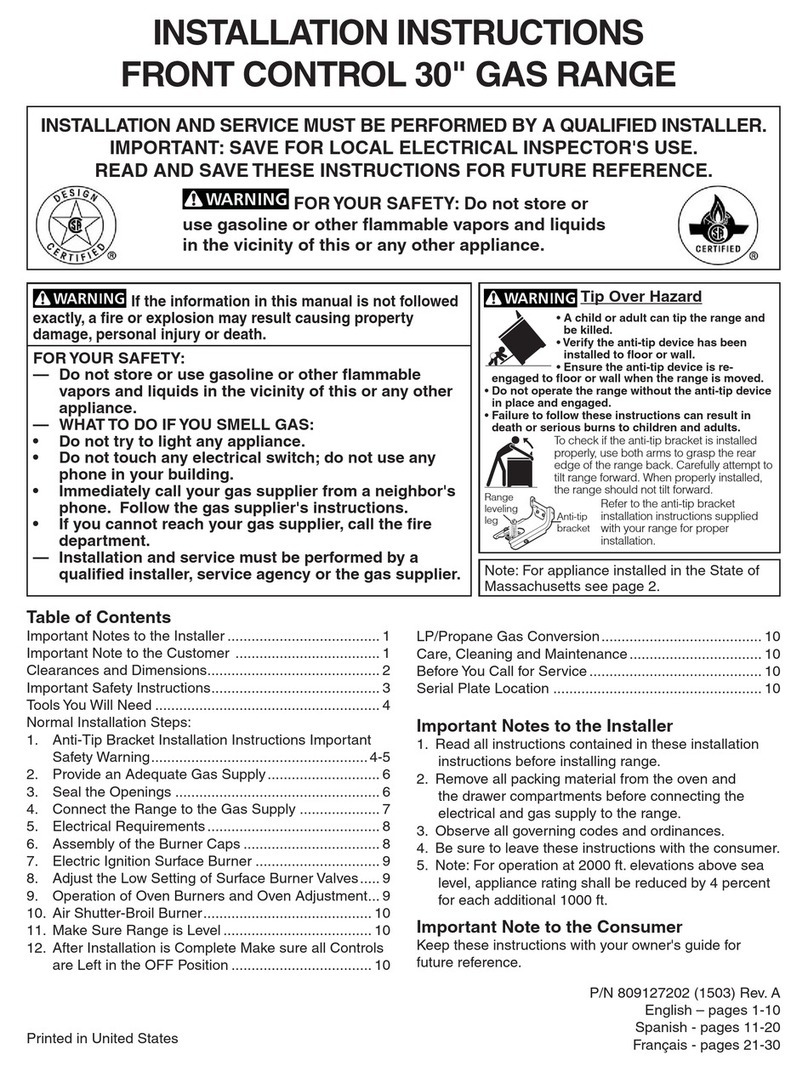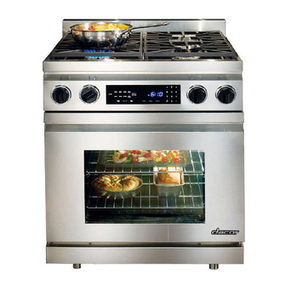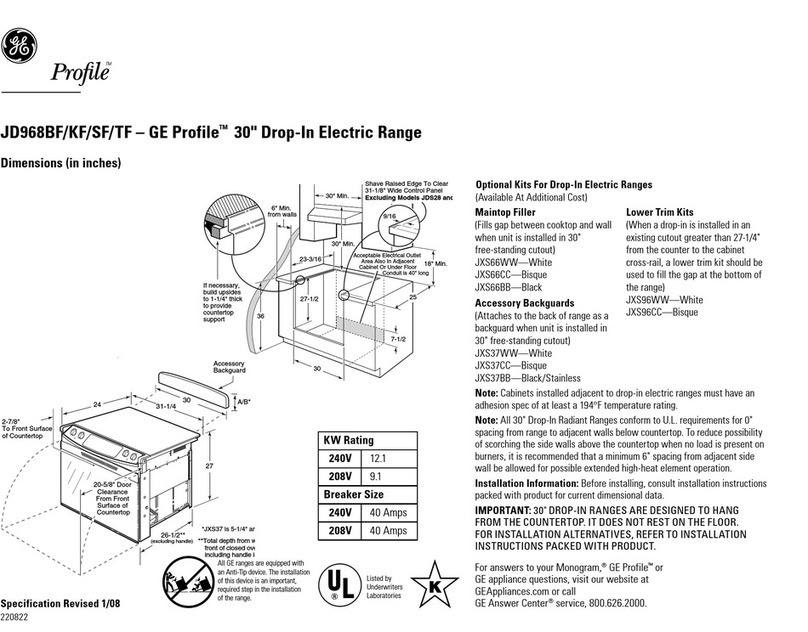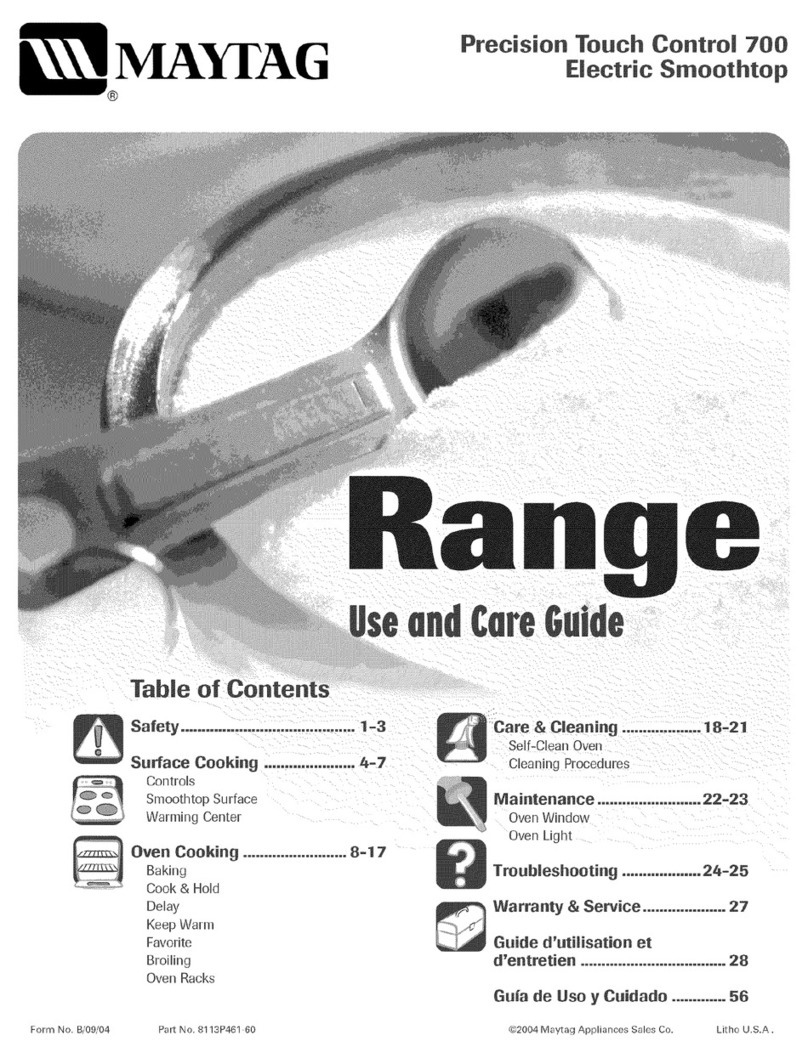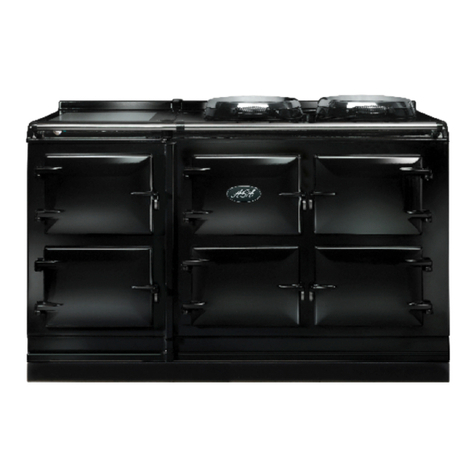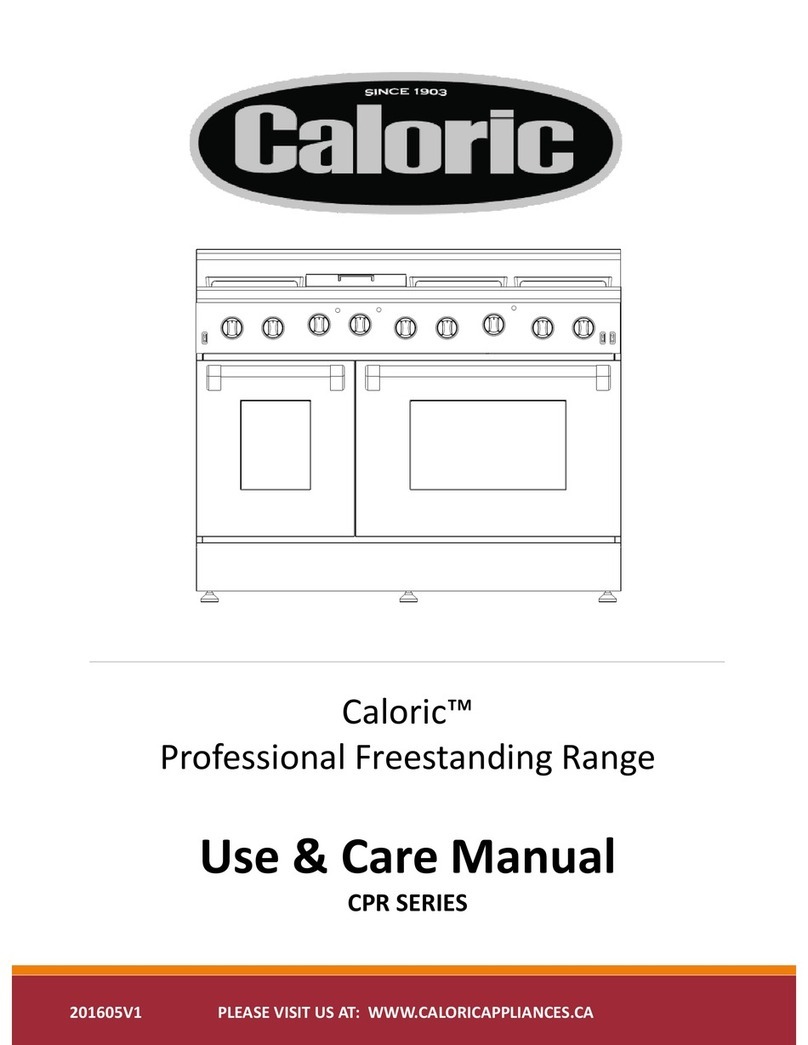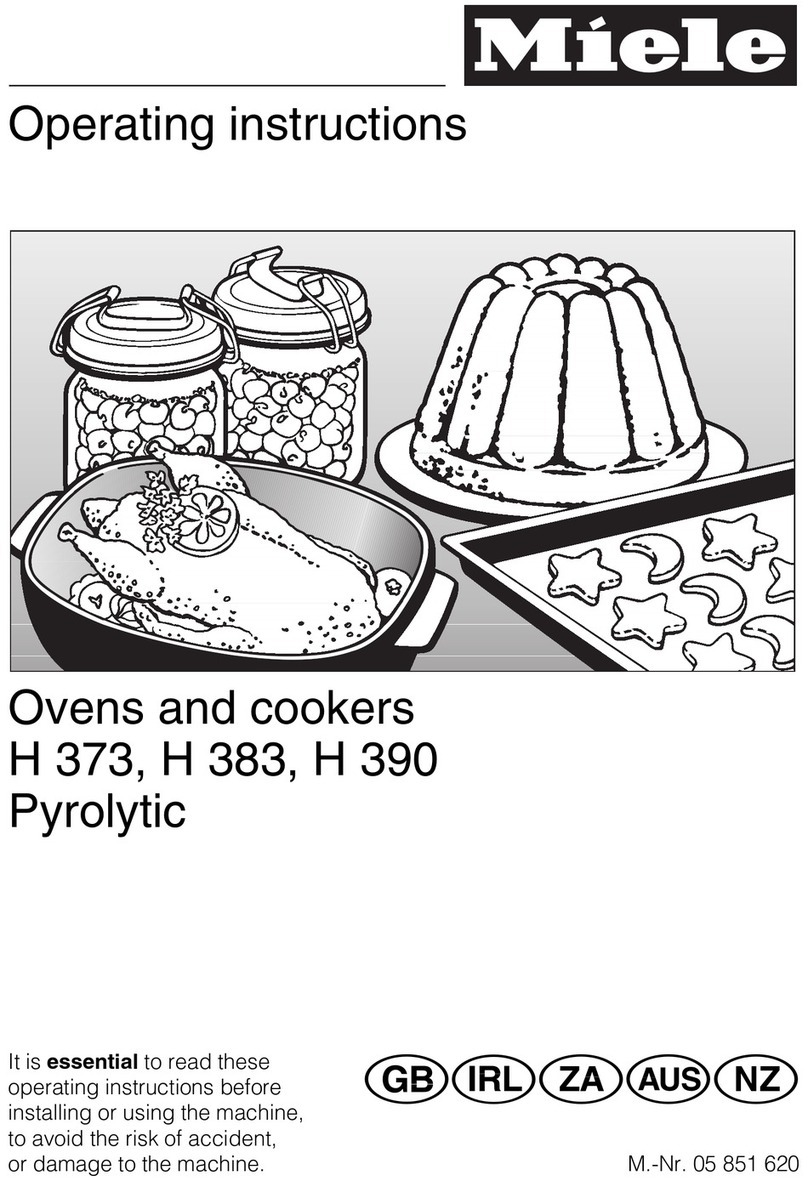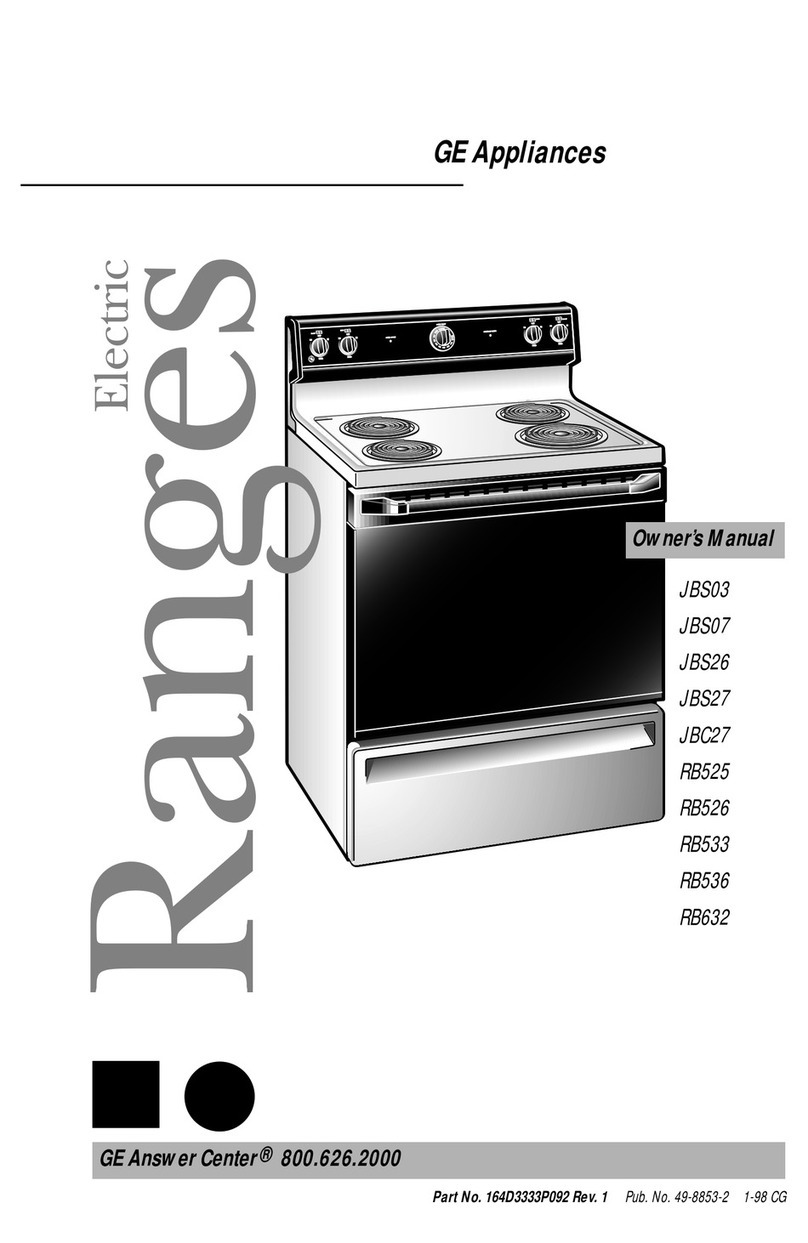Roper FGP335Y User manual

Home Appliances
UseAndCare
r
A Note To You 2
Important Safety
Instructions 3
Parts And Features 6
Using Your Range 7
Caring For Your
Range 16
If You Need
Assistance
Or Service 23
Warranty 28
I-800~&ROPER
Call us with questions or comments.
STANDARD-CLEANING GAS RANGE
TO THE INSTALLER: PLEASE LEAVE THIS
INSTRUCTION BOOK WITH THE UNIT.
MODEL FGP335Y
TO THE CONSUMER: PLEASE READ AND
KEEP THIS BOOK FOR FUTURE REFERENCE. \

A Note To You
Thank you for buying a Roper@ appliance.
You have purchased a quality, world-class home appliance. Years of engineering experience
have gone into its manufacturing. To ensure that you will enjoy many years of trouble-free
operation, we have developed this Use and Care Guide. It is full of valuable information on
how to operate and maintain your appliance properly and safely. Please read it carefully.
Also, please complete and mail the Ownership Registration Card provided with your appli-
ance. This will help us notify you about any new information on your appliance.
Your safety is important to us.
This guide contains safety symbols and statements. Please pay special attention to these
symbols and follow any instructions given. Here is a brief explanation of the use of each
symbol.
This symbol will help alert you to such
1 and electrical shock. ’ ’ ~~
dangers as personal injury burns fire 1
This symbol will help you avoid actions
which could cause product damage
(scratches, dents, etc.) and damage to
your personal property,
I
@ALL RANGES CAN TIP.
*INJURY TO PERSONS
COULD RESULT.
l
INSTALL ANTI-TIP
DEVICES PACKED
WITH RANGE.
l
SEE INSTALLATION
For further information, see “The anti-tip bracket” on page 15.
1 u 1 INSTRUCTIONS.
Our toll-free number, I-SOO-44-ROPER (l-800-447-6737), is
available 24 hours a day.
If you ever have a question concerning your appliance’s operation, or if you need service, first
see “If You Need Assistance Or Service” on page 23. If you need further help, feel free to call
us. When calling, you will need to know your appliance’s complete model number and serial
number. You can find this information on the model and serial number plate (see diagram on
page 6). For your convenience, we have included a handy place below for you to record these
numbers, the purchase date from the sales slip and your dealer’s name and telephone
number. Keep this book and the sales slip together in a safe place for future reference.
Model Number
Serial Number
Purchase Date
Dealer Name
Dealer Phone
2

Important Safety Instructions
READ AND SAVE THESE INSTRUCTIONS
Gas ranges have been thoroughly tested for safe and efficient operation. However, as with
any appliance, there are specific installation and safety precautions which must be followed
to ensure safe and satisfactory operation.
To reduce the risk of fire, electrical shock, injury to persons,
or damage when using the range, follow basic precautions,
including the following:
WARNING: If the information in this manual is not followed exactly,
a fire or explosion may result causing property damage, personal
injury or death.
Do not store or use gasoline or other flammable vapors and liquids in
the vicinity of this or any other appliance.
WHAT TO DO IF YOU SMELL GAS:
l
Do not try to light any appliance.
l
Do not touch any electrical switch; do not use any phone in your
building.
l
Immediately call your gas supplier from a neighbor’s phone. Follow
the gas supplier’s instructions.
l
If you cannot reach your gas supplier, call the fire department.
Installation and service must be performed by a qualified installer,
service agency or the gas supplier.
General
l
Install or locate the range only in accor-
dance with the provided Installation
Instructions. The range must be installed
by a qualified installer. The range must be
properly connected to the proper gas
supply and checked for leaks. The range
must also be properly connected to
electrical supply and grounded.
l
Gas fuels and their use in appliances can
cause minor exposures to benzene,
formaldehyde, carbon monoxide and
soot, primarily from incomplete combus-
tion. Significant exposure to these
substances can cause cancer or repro-
ductive harm. Properly adjusted burners
with a blue, rather than a yellow, flame will
minimize incomplete combustion. Venting
with a hood or an open window will further
minimize exposure.
l
Do not store things children might want
above the range. Children could be burned
or injured while climbing on it.
l
Do not leave children alone or unattended
in area where the range is in use. They
should never be allowed to sit or stand on
any part of the range. They could be
burned or injured.
l
Do not operate the range if it is damaged
or not working properly.
continued on next page
3

l Do not use the range for warming or
heating the room. Persons could be
burned or injured, or a fire could start.
l Do not attempt to light the oven burner
during a power failure. Personal injury
could result. Reset oven controls to the
off position in the event of a power
failure.
l Use the range only for its intended use
as described in this manual.
l Do not touch surface burners, areas
near surface burners or interior surfaces
of oven. Areas near surface burners and
interior surfaces of an oven become hot
enough to cause burns. During and after
use, do not touch, or let clothing or other
flammable materials contact surface
burners, areas near surface burners or
interior surfaces of oven until they have
had sufficient time to cool. Other sur-
faces of the range, such as the oven
vent opening, the surface near the vent
opening, the cooktop, the oven door and
window, could also become hot enough
to cause burns.
l Do not wear loose or hanging garments
when using the range. They could ignite
if they touch an open flame and you
could be burned.
l Use only dry potholders. Moist or damp
potholders on hot surfaces may result in
burns from steam. Do not let potholder
touch an open flame. Do not use a towel
or bulky cloth for a potholder. It could
catch on fire.
l Keep range vents unobstructed.
l Do not heat unopened containers. They
could explode. The hot contents could
cause burns and container particles
could cause injury.
l Do not store flammable materials on or
near the range. The fumes can create an
explosion and/or fire hazard.
l Do not use the oven for storage.
l Never use a match or other flame to look
for a gas leak. Explosion and injury could
result.
l Know where your main gas shutoff valve
is located.
When using the cooktop
l Make sure the utensils you use are large
enough to contain food and avoid
boilovers and spillovers. Heavy splatter-
ing or spillovers left on a range can ignite
and burn you. Pan size is especially
important in deep fat frying.
l Check to be sure glass cooking utensils
are safe for use on the range. Only
certain types of glass, glass-ceramic,
ceramic, earthenware or other glazed
utensils are suitable for cooktops without
breaking due to the sudden change in
temperature.
l Never leave surface burners unattended
at high heat settings. A boilover could
result and cause smoking and greasy
spillovers that may ignite.
4

l Turn pan handles inward, but not over
other surface burners. This will help
reduce the chance of burns, igniting of
flammable materials, and spills due to
bumping of the pan.
l Do not use decorative covers or trivets
over the surface burners.
When using the oven
l Always position the oven rack(s) in
desired location while oven is cool.
l Use care when opening oven door. Let
hot air or steam escape before removing
or replacing food.
Grease
l Grease is flammable. Do not allow
grease to collect around cooktop or in
vents. Wipe spillovers immediately.
l Do not use water on grease fires. Never
pick up a flaming pan. Smother flaming
pan by covering with a well-fitted lid,
cookie sheet or flat tray. Flaming grease
outside of pan can be extinguished with
baking soda or, if available, a multipur-
pose dry chemical or foam-type extin-
guisher.
Care and cleaning
l Do not clean door heat seal. It is essential
for a good seal. Care should be taken not
to rub, damage or move the seal. Clean
only parts recommended in this Use and
Care Guide.
l Do not repair or replace any part of the
range unless specifically recommended in
this manual. All other servicing should be
referred to a qualified technician.
l Any additions, changes or conversions
required in order for this appliance to
satisfactorily meet the application needs
must be made by a Roper Distributor or
Qualified Agency.
l Disconnect the electrical supply and the
gas supply at the shutoff valve near the
range before servicing the range.
- READ AND SAVE THESE INSTRUCTIONS -
5

Parts And Features
This section contains captioned illustrations of your range. Use them to become familiar with
the location and appearance of all parts and features.
Manual oven light switch
\
R
Clock/
Minute Timer
Oven vent
Surface burn-
ers, grates and
reflector pans
I ‘.-%
Model and serial
number plate
(under cooktop)
Automatic oven
light switch
Surface burner
control panel
Anti-tip bracket
Broiler drawer -
Oven burner
(not shown)
Surface ’ Left rear
burner control
markers knob
‘Left front
control
knob
&en tempera-
ture control
Display
Rigit rear
control
knob
kight front
control
knob
Hour and minute Cl&k/timer
buttons switch
6

In This Section
Page Page
Using the surface burners .................7 Adjusting the oven temperature
...............................................13
Positioning racks and pans ...............9 control ..............................................13
For best air circulation .....................10 Broiling
Setting the clock 11 Energy saving tips ............................14
.,.............................
Minute Timer .....s..............11 The oven vent ...................................15
Using the
Baking/roasting 12 The anti-tip bracket ..........................15
..*..............*..............
Using Your Range
To obtain the best cooking results possible, you must operate your range properly. This
section gives you important information for efficient and safe use of your range.
Using the surface burners
Your range is equipped with electric ignitors.
Electric ignitors automatically light the
burners each time they are used.
Push in the control knob and turn I
counterclockwise to the LITE position. The
clicking sound is the ignitor sparking.
Visually check that burner has lit.
To stop the clicking sound after the burner
lights, turn the control knob to the desired
setting. You can set the control knob any-
where between HI and LO.
Surface burner markers
The solid dot in the surface burner marker
shows which surface burner is turned on by
that knob.
Burner heat settings
Use correct burner heat settings (see next
page). If the heat setting is too high, it can:
l Char bacon and cause curling.
l Make eggs tough and crisp at the edges.
l Toughen liver, fish and seafood
l Scorch delicate sauces and custards.
l Cause a boilover.

Until you get used to the settings, use
the following as a guide. For best results,
start cooking at the high setting; then turn
the control knob down to continue cooking.
SETTING RECOMMENDED USE
LITE l To light the burner. After the
burner lights, turn control
back to a desired setting.
HI l To start foods cooking.
l To bring liquids to a boil.
Medium l To hold a rapid boil.
l To fry chicken or pancakes.
l For gravy, pudding and
icing.
l To cook large amounts of
vegetables.
LO l To keep food warm until
ready to serve.
NOTE: Do not cook with the control in the
LITE position.
In case of a prolonged power
failure
Surface burners can be manually lighted.
Hold a lit match near a burner and turn the
control knob to the LITE position. After the
burner lights, turn the control knob to the
desired setting.
Burn, Fire and Explosion Hazard
l Burner flame should not extend
beyond the edge of the cooking
utensil. The flame could burn you and
cause poor cooking results.
l Be sure all control knobs are turned to
OFF when you are not cooking.
Someone could be burned or a fire
could start if a burner is accidentally
left ON.
l If the flame should go out while
cooking, or if there is a strong gas
odor, turn the burners OFF. Wait five
minutes for the gas odor to disappear
before relighting burner. If gas odor is
still present, see safety note on page
3. Failure to follow these precautions
could result in explosion or fire.
Product Damage Hazard
Do not leave an empty utensil, or one
which has boiled dry, on a hot surface
burner.
The utensil could overheat and could
damage the utensil or cooking product.
Cookware tips
No one brand of cookware is best for all
people. Knowing something about pan
materials and construction will help you
select the correct cookware for your needs.
l NOTE: For best results and greater fuel
efficiency, use only flat-bottomed cook-
ware in good condition.
l The pan should have straight sides and a
tight-fitting lid.
l Choose medium to heavy gauge (thick-
ness) pans that are fairly lightweight.
l The pan material (metal or glass) affects
how fast heat transfers from the surface
burners through the pan material and how
evenly heat spreads over the pan bottom.
Choose pans that provide the best cooking
results.

l Handles should be made of a sturdy, heat-
resistant material and be securely attached
to the pan.
l Pans should be easy to clean. Check to be
sure there are no crevices, rough edges or
areas where food might collect.
l Be sure pans do not tip, whether they are
full or empty.
l Use cookware only as it was intended to
be used. Follow pan instructions. This is
very important for glass cookware because
some should be used only in the oven.
Other pans are’marked as flameware and
may be used on the surface burners.
Home canning information
The large diameter of most water-bath or
pressure canners combined with high heat
settings for long periods of time can cause
damage to the cooktop.
To protect your range:
l For best results, use a canner which can
be centered over the surface burner.
l Do not place canner on two surface
burners at the same time. Too much heat
will build up and will damage the cooktop.
l Start with hot water. This reduces the
time the control is set on high. Reduce
heat setting to lowest position needed to
keep water boiling.
l Keep reflector pans clean for best heat
reflection.
Positioning racks and pans
For baking/roasting with one rack, place
the rack so the top of the food will be
centered in the oven.
Rack placement for specific foods:
FOOD RACK POSITION
Frozen pies, large 1st or 2nd rack
roasts, turkeys guide from bottom
Angel and bundt cakes, 2nd rack guide
most quick breads, from bottom
yeast breads, casse-
roles, meats
Cookies, biscuits, 2nd or 3rd rack
muffins, cakes, guide from bottom
nonfrozen pies
When baking on two racks, arrange racks
on first and third rack guides from bottom.
Personal Injury Hazard
*Always position oven rack(s) in
desired location before turning oven
on. Be sure the rack(s) is level.
l If rack(s) must be moved while oven
is hot, use potholders or oven mitts to
protect hands.
l Do not place items on the open oven
door.
l Be careful when installing and remov-
ing large food items from sixth rack
position. Food will be close to hot
surfaces, including oven bottom and
sides.
Failure to follow the above precautions
could result in personal injury.

6th oven rack position
(roasting rack)
When roasting food too larqe to be placed in
oven with rack in lowest position, place rack
on bottom of oven.
For proper roasting, follow these
guidelines:
l The rack must be level
l Use adequate amount of liquid (meat
juices or water) so food does not get
overdone.
l Do not try to pull rack out over door.
Rack will be at the same level as door
when door is opened.
\
6th oven rack position
For best air circulation
Hot air must circulate around the pans in the
oven for even heat to reach all parts of the
oven. This results in better baking.
l Place the pans so that one is not directly
over the other.
l For best results, allow 1l/2-2 inches
(4-5 cm) of space around each pan and
between pans and oven walls. There must
be a minimum space of 1 inch (2.5 cm).
l Use only one cookie sheet in the oven at
one time.
Use the following as a guide to determine
where to place the pans:
One pan
Place in the center of the oven rack.
Two pans
Place in opposite corners of the oven rack.
Three or four pans
Place in opposite corners on each oven rack.
Stagger pans so no pan is directly over
another.
10

Setting the clock
When the range is first plugged in, or
following a power outage, “12:OO” will flash
on the display.
1. Slide the ClockITimer Switch to the
CLOCK position.
CLOCK
l
0
:-I
a
TIMER
2. Push in and hold the Hour button until
the correct hour appears on the display.
(The numbers wiil only count forward.)
HOUR
3. Push in and hold the Minute button until
the correct minutes appear on the display.
MINUTE
Using the Minute Timer
The Minute Timer does not start or stop the
oven. It works like a kitchen timer. Set it in
minutes up to 1 hour, 59 minutes. The control
will beep when the set time is up.
1. Slide the Clock/Timer switch to the TIMER
position. The display will show “059”
(59 minutes).
2. To set a time more than 59 minutes,
push in and release the Hour button. The
display will show “159”. The time can now
be adjusted down by pushing in and holding
the Minute button until the correct time
shows on the display.
To set a time less than 59 minutes, push
in and hold the Minute button until the
correct time shows on the display.
The Minute Timer will automatically start
when the Minute button is released.
3. When the set time has passed, the
display will show “0:OO” and the control will
beep continuously. Slide the Clock/Timer
Switch to the CLOCK position to cancel the
Minute Timer and return to the clock mode.
CLOCK
TIMER
MINUTE
CLOCK
TIMER
11

Baking/roasting
NOTE: Do not attempt to light the oven
burner during a power failure. See “Important
Safety Instructions” on page 4 for more
information.
1. Position the rack(s) properly before
turning on the oven. To change rack
position, lift rack at front and pull out. For
further information, see “Positioning racks
and pans” on page 9.
2. Push in and turn the Oven Temperature
Control counterclockwise to the baking/
roasting temperature you want. The oven
burner will automatically light in 50-60
seconds.
3. When baking, preheat the oven for 10
minutes. Put food in the oven.
NOTES:
l Do not preheat when roasting or
cooking items such as casseroles
l Do not place food directly on the oven
bottom.
4. During baking/roasting, the oven burner
will turn on and off to maintain the tem-
perature setting.
5. When baking/roasting is done, turn the
Oven Temperature Control clockwise to
OFF.
12

Adjusting the oven temperature control
Oven temperature controls will gradually
shift after years of use. So, even though
your new oven is properly adjusted to
provide accurate temperatures, it may cook
faster or slower than your old oven.
If, after using the oven for a period of time,
you are not satisfied with the temperature
settings, you can adjust them by following
these steps:
1. Make sure the Oven Temperature
Control Knob is turned to the off position.
Pull knob straight off and flip it over.
2. Loosen the locking screws inside the
control knob. Note the position of the
notches.
3. To lower the temperature, hold knob
handle firmly and move the tooth a notch
clockwise. Each notch equals about
20°F (11°C).
4. To raise the temperature, hold knob
handle firmly and move the tooth a notch
counterclockwise. Each notch equals
about 20°F (11%).
5. Tighten the locking screws and replace
the control knob.
To lower
Broiling
The broiler drawer is located below the oven
door. Always broil with the oven door
closed.
1. Pull the broiler drawer open and tilt the
door panel down.
2. Place broiler pan grid so grease can
drain down ribbing and through slots into
lower part of the broiler pan. See picture.
3. Before the broiler is turned on, place
food on broiler pan and position the
broiler pan at one of the three levels.
4. Close broiler drawer.

5. Push in and turn the Oven Temperature
Control counterclockwise to BROIL.
The broiler will automatically light in
50-60 seconds.
6. When broiling is done, turn the Oven
Temperature Control clockwise to OFF.
NOTE: Do not preheat the broiler before
using. Completely close the broiler drawer
during broiling.
Energy saving tips
Although the energy used for cooking is
usually a very small percentage of the total
energy used in the home, cooking energy
can be used efficiently. Here are some tips
to help you save energy when using your
cooking product:
l Use pans with flat bottoms, straight sides
and tight-fitting lids.
l Cook with a minimum of liquid or fat to
help shorten cooking time.
l Preheat pans only when recommended
and for the shortest time possible.
l Start food on higher heat settings, then
set surface burner control on low to
finish cooking.
l Use the more efficient surface burners
instead of the oven when possible.
l Turn on the surface burner only after
placing filled pan on the burner grate.
l “Oven peeking” may cause heat loss,
longer cooking times and unsatisfactory
baking results. Rely on your timer to keep
track of the cooking time.
l Bake cakes, pies or cookies when oven is
warm. Best time to bake is right after a
meal has been cooked in oven.
l Preheat the oven no longer than neces-
sary.
l Plan your meals for the most efficient use
of the range. When using the oven to cook
one food, try to cook the rest of the meal in
it also.
l Do not preheat when broiling, roasting or
cooking items such as casseroles.
l Keep reflector pans clean for best heat
reflection.
14

The oven vent
Hot air and moisture escape from the oven
through a vent located in lower part of
backguard. The vent is needed for air
circulation. Do not block the vent. Poor
baking/roasting will result.
NOTE: Never store plastics, paper or other
items that could melt or burn near the oven
vent, or any of the surface burners.
Burn Hazard
When the oven is ON, pans and pan
handles left near the oven vent could
become hot enough to burn the user
and to melt plastics. Use potholders to
move pans.
The anti-tip bracket
The range will not tip during normal use. However, tipping can occur if you apply too much
force or weight to the open door without the anti-tip bracket properly secured.
Personal Injury Hazard
*To reduce risk of range tipping over, secure range with a properly
installed anti-tip bracket supplied with range.
l If range is moved for cleaning or service, check that anti-tip device
is engaged before using range.
Failure to follow the above precautions could result in personal injury.
To verify the anti-tip bracket
is engaged:
l Grasp rear of range and carefully try to tilt
forward. If anti-tip bracket is attached to
floor with screws and rear leveling legs are
positioned under bracket, range should not
tilt forward.
l See Installation Instructions for further
details.
15

Caring For Your Range
In This Section
Page Page
Surface burner grates and reflector Removing the oven bottom ............ .19
pans .................................................. .16 Cleaning chart ................................... 20
Lift-up cooktop ................................ .17 The oven light ................................... 22
Surface burners ............................... .17
Removing the oven door ................ .18
Your range is designed for ease of care.
You can do most cleaning with items found
around your home. Cleaning your range
whenever spills or soiling occurs will help to
keep it looking and operating like new.
Burn, Electrical Shock, Fire and
Explosion Hazard
l Make sure all controls are OFF and the
range is cool before cleaning.
l Do not use oven cleaners, bleach or
rust removers.
l Do not obstruct the flow of combustion
and ventilation air.
l Keep appliance area clear and free of
combustible materials, gasoline and
other flammable vapors and liquids.
Failure to follow these guidelines could
result in burns, electrical shock, fire or
explosion.
Surface burner grates and reflector pans
1. Make sure all surface burners are off and
the surrounding parts are cool.
2. Lift off the surface burner grates and
remove the reflector pans.
3. Wash the grates and reflector pans with
warm, soapy water or in a dishwasher.
Use a nonabrasive, plastic scrubbing pad
for cooked-on foods. Rinse and dry well.
4. Replace reflector pans and burner
grates.
16

Lift-up cooktop
2. Lift front of cooktop at both front corners until
the support rods lock into place.
- . I
Personal Injury Hazard
Be sure both support rods are fully
extended and in the locked position.
Failure to do so could result in per-
sonal injury from the cooktop acciden-
tally falling.
1. Remove surface burner grates and reflector
pans.
Product Damage Hazard
Do not drop the cooktop.
Damage could result to the porcelain
and the cooktop frame.
3. Wipe with warm, soapy water. Use a soapy
steel-wool pad on heavily soiled areas.
4. To lower the cooktop, lift cooktop from both
sides while pressing the support rods back to
unlock them. Lower the cooktop into place.
Replace reflector pans and surface burner
grates.
Surface burners
1. Lift up the cooktop, following the instructions
above.
2. Before cleaning, remove screws that
hold each of the burners in place. The
screws prevent the burners from moving
during shipment. Remove the shipping
screw with a Phillips screwdriver, lift the
burner up, tilt it to one side at the end
closest to the ignitor and move it toward
the back of the range. This separates the
burner from the gas valve at the front of
the range, so it can be easily removed.
3. Wipe off surface burners with warm, soapy
water and a sponge after each use. To
remove cooked-on food, soak the burners
in a vinegar and water solution for 20-30
minutes. Scrub with a plastic scrubbing pad.
17

4. If ports are clogged, clean with a straight
pin. DO NOT enlarge or distort the ports.
DO NOT use a toothpick to clean the ports.
5. Before putting the burners back, dry
them thoroughly by setting them in a
warm oven for 30 minutes.
6. Replace burners, making sure they are
properly seated and level. Replace
screws.
7. Occasionally check the burner flames
for proper size and shape as shown. A
good flame is blue in color. If flames lift
off ports, are yellow, or are noisy when
turned off, you may need to clean the
burners (see above), or call a qualified
technician for adjustment.
Typical surface burner flame
at highest setting
Removing the oven door
Removing the oven door will help make it
easier to clean the oven.
Burn and Electrical Shock Hazard
Make sure all controls are OFF and the
oven is cool before removing oven
door.
Failure to do so could result in burns or
electrical shock.
To remove:
1. Open the door as far as it will go.
2. Remove the screws on each side of the
oven door.
3. Close the door about %Iof the
way.
4. Lift the door up and off the hinges.
To replace:
1. Be sure the hinge arms are in the open
position. Be careful if pulling the hinges
open by hand. Hinges may snap back
against the oven frame and could pinch
fingers.
18

2. Hold the door at the sides near the top.
Insert hinge arms into slots at the bottom
of the door. Insert arms evenly, as far as
they will go.
3. If the door is not in line with the oven
frame, remove it and repeat the above
steps.
4. Replace the screws on the oven door.
Removing the oven bottom
The panel in the oven bottom can be
removed for cleaning.
Burn Hazard
Make sure all parts are cool before
removing.
Failure to do so could result in burns.
To remove:
1. Remove oven racks.
2. Remove the two hold-down screws at the
rear of the oven. If screws are too tight to
remove by hand, use a screwdriver.
3. Place fingers in slots in bottom panel and
lift rear of panel up and back until lip at
the front of panel is clear of front frame of
oven cavity.
4. Lift bottom up and out.
To replace:
1. Place oven bottom panel in oven with the
back raised about 6 inches or until you
can insert the hold-down lip at front of
panel under the front frame of oven
cavity.
2. Push back of oven bottom panel down
fully into place on metal flanges on rear
wall and insert the hold-down screws.
19

Cleaning chart
Use the following table to help you clean all parts of your range.
PART
Control knobs
WHAT TO USE HOW TO CLEAN
Sponge and warm, soapy l Turn knobs to OFF and pull straight
water away from control panel.
l Wash, rinse and dry thoroughly. Do
not soak.
l Do not use steel wool or abrasive
cleansers. They may damage the
finish of the knobs.
l Replace knobs. Make sure all knobs
point to OFF.
Control panels Sponge and warm, soapy l Wash, rinse and dry thoroughly.
water l Do not use steel wool or abrasive
OR
Paper towel and spray cleansers. They may damage the
finish.
glass cleaner l Do not spray cleaner directly on panel.
Apply cleaner to paper towel.
Exterior surfaces Sponge and warm, soapy l Wash, rinse and dry thoroughly.
(other than control water l Use nonabrasive, plastic scrubbing
panels) pad on heavily soiled areas.
l Do not use abrasive or harsh
cleansers. They may damage the
finish.
NOTE: Do not allow foods containing
acids (such as vinegar, tomato or lemon
juice) to remain on surface. Acids may
remove the glossy finish. Also wipe up
milk or egg spills when cooktop is cool.
Surface burner Warm, soapy water and a l In dishwasher, wash with other cooking
grates and nonabrasive, plastic utensils.
chrome reflector scrubbing pad l Dry completely.
pans OR
Dishwasher l Do not use abrasive or harsh
cleansers.
20
Table of contents
Other Roper Range manuals
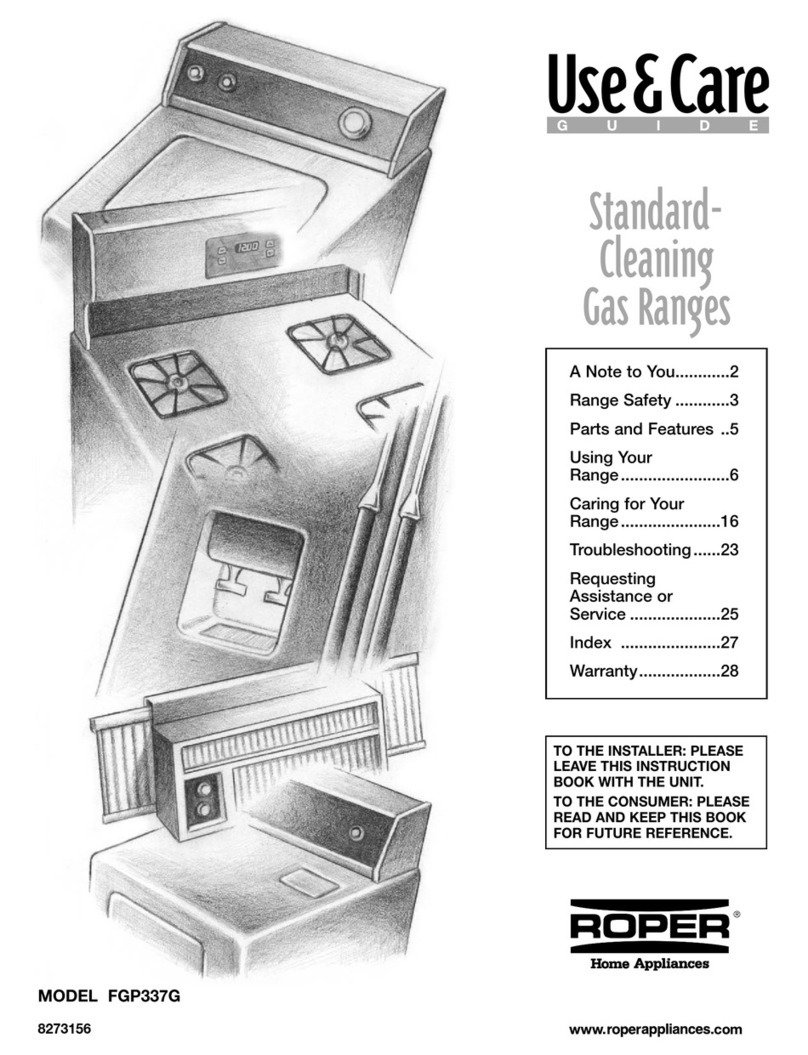
Roper
Roper FGP337G User manual

Roper
Roper FEP310KW4 User manual
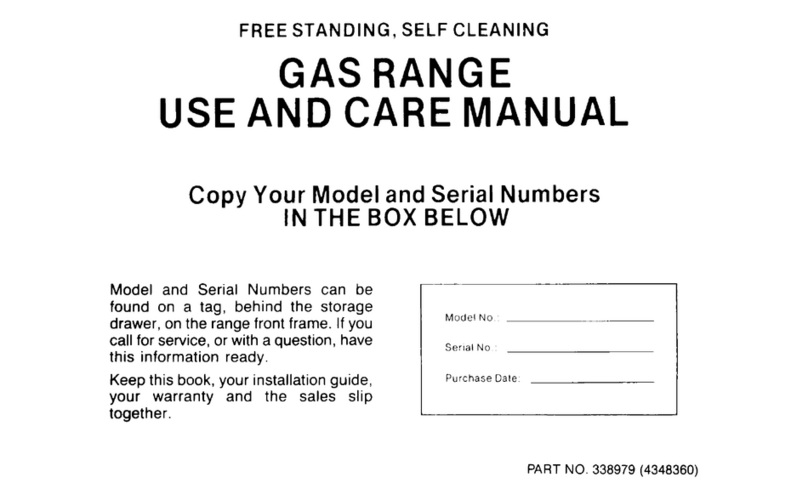
Roper
Roper F8858W0 User manual

Roper
Roper FGS337G User manual
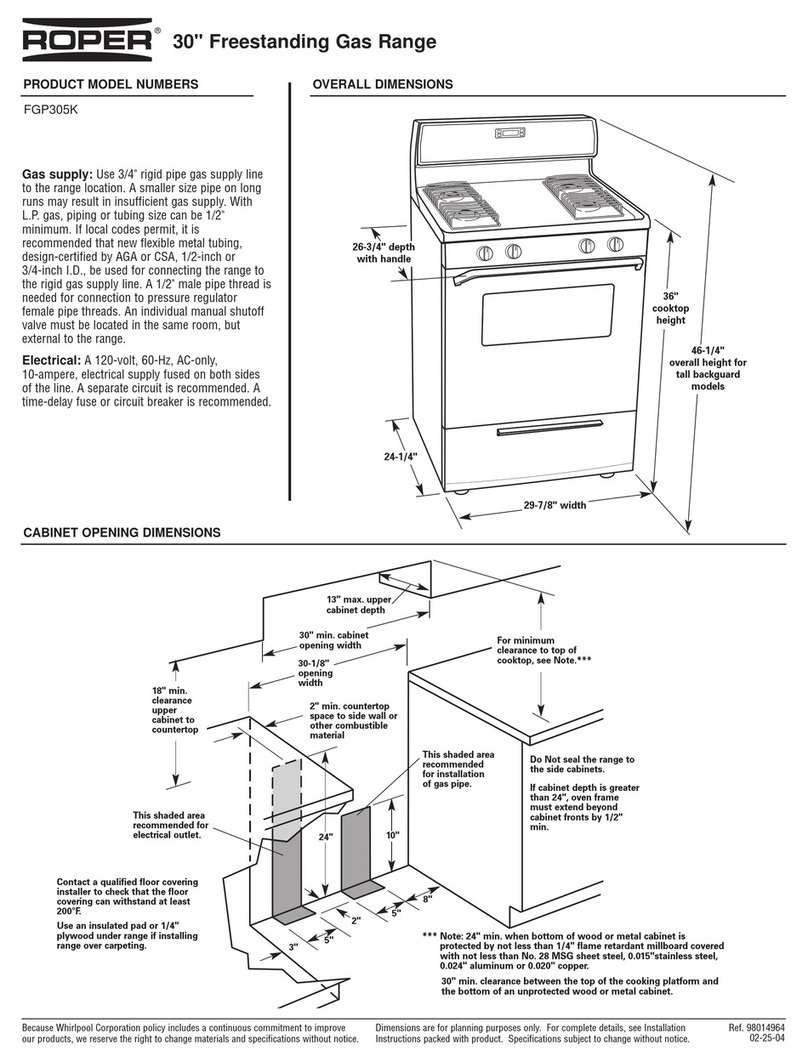
Roper
Roper FGP305KW User guide
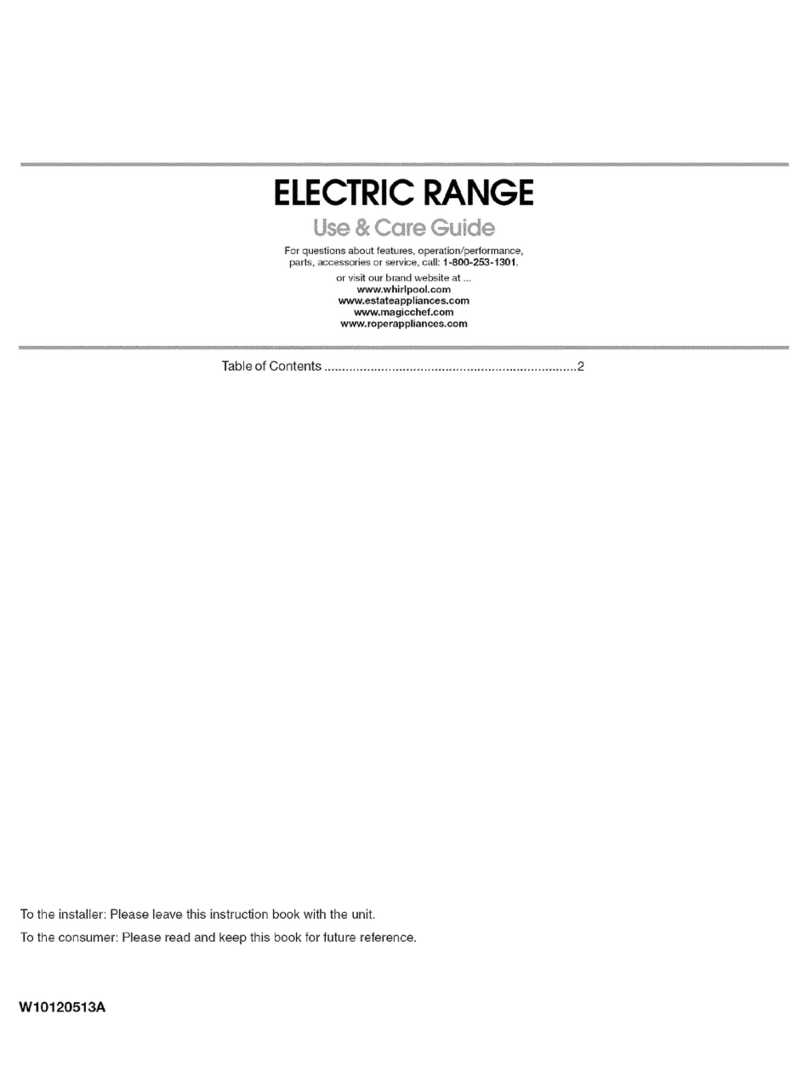
Roper
Roper FEP310KW5 User manual

Roper
Roper FEP350Y User manual

Roper
Roper FEP310KW0 User manual
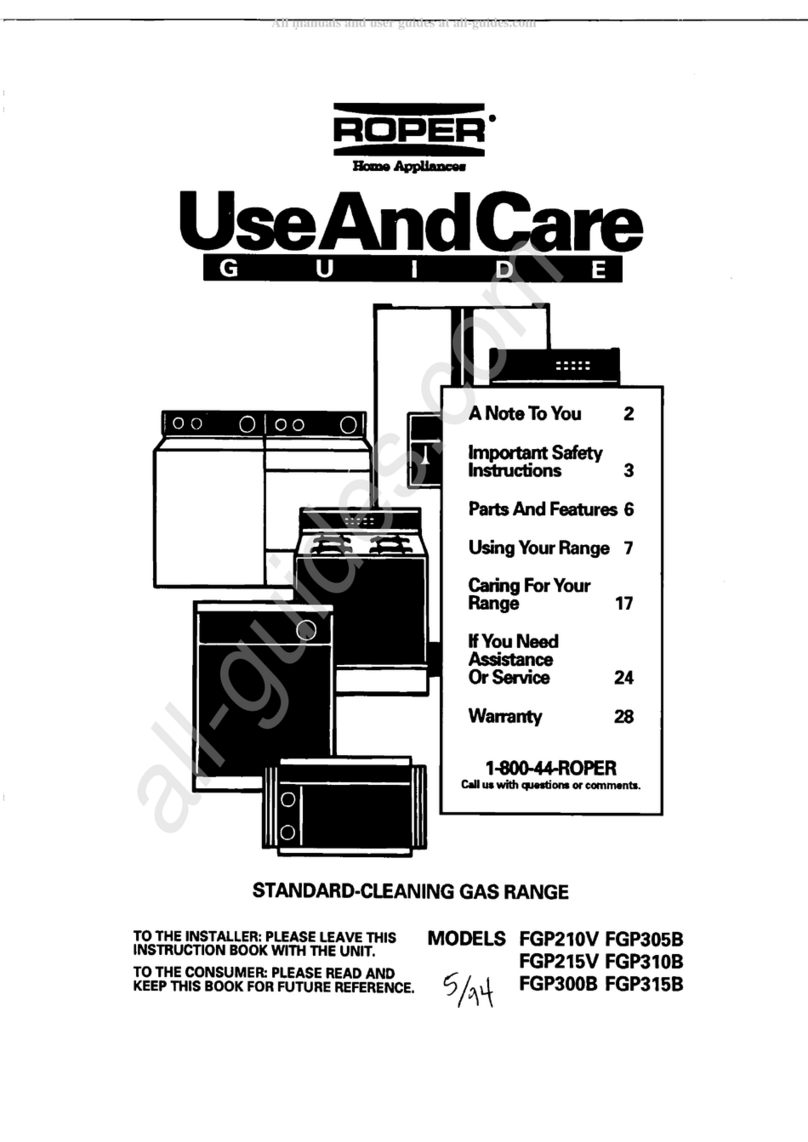
Roper
Roper FGP315B User manual

Roper
Roper FGP335B User manual

Roper
Roper FGP314TQ0 User manual
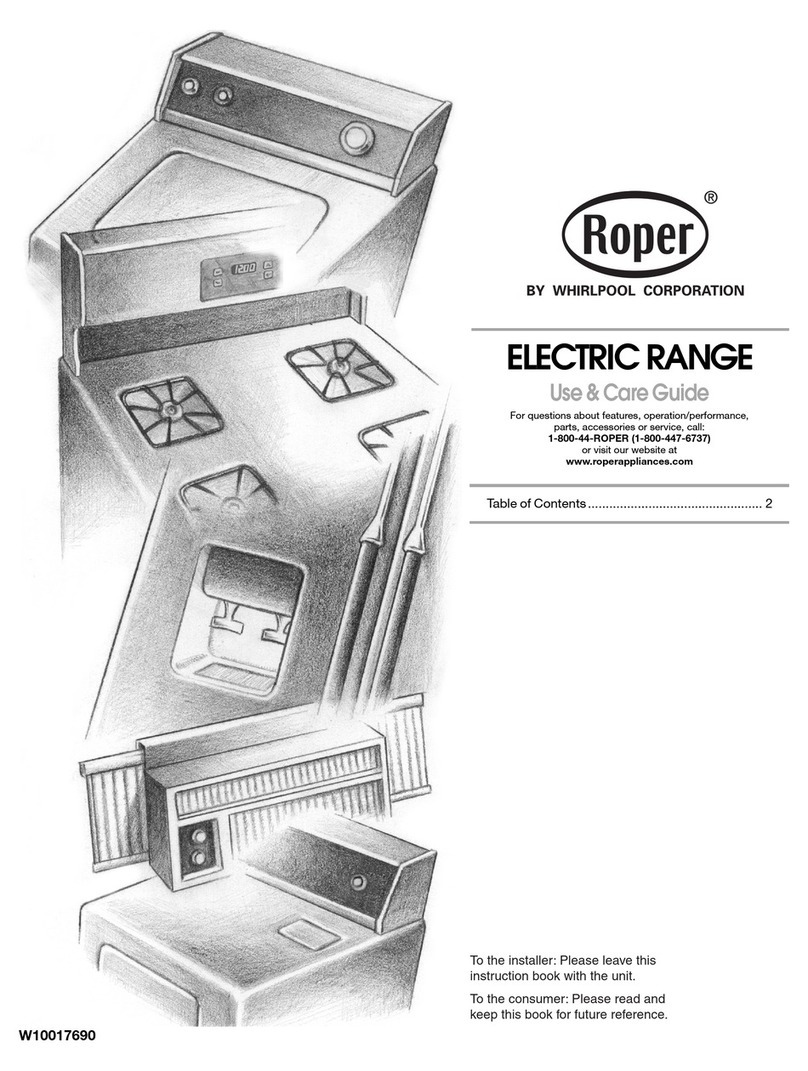
Roper
Roper W10017690 User manual
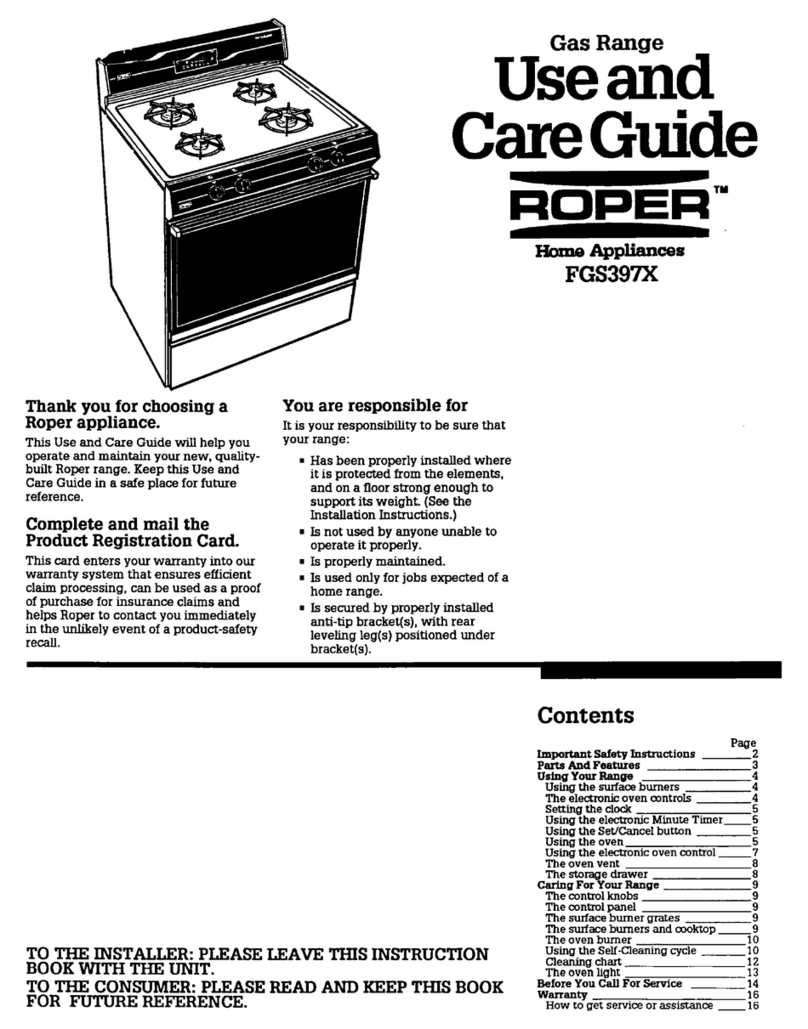
Roper
Roper FGS397X User manual
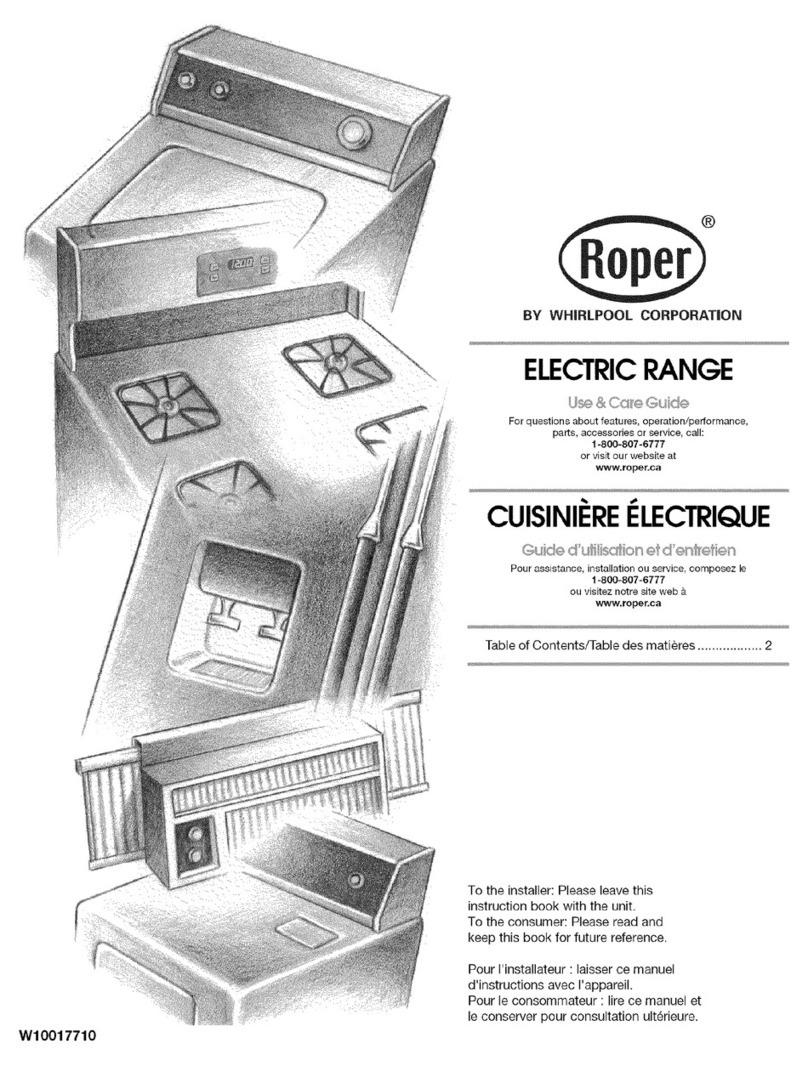
Roper
Roper RME30003 User manual

Roper
Roper FES310Y User manual
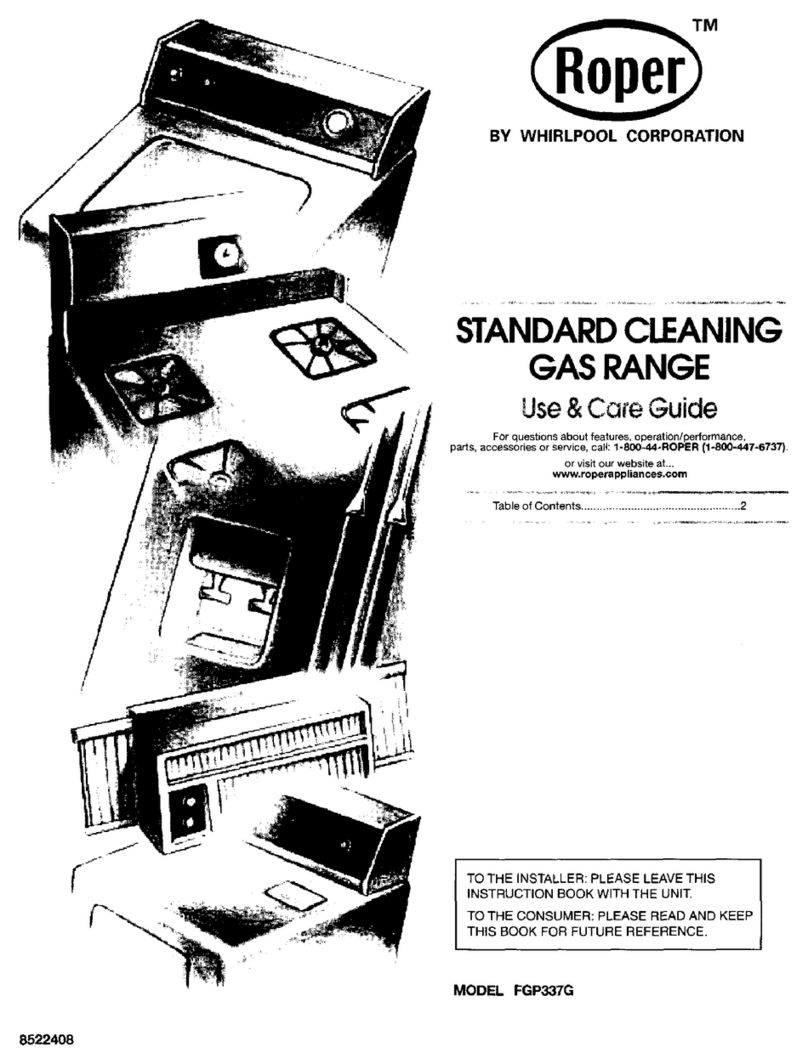
Roper
Roper FGP337G User manual
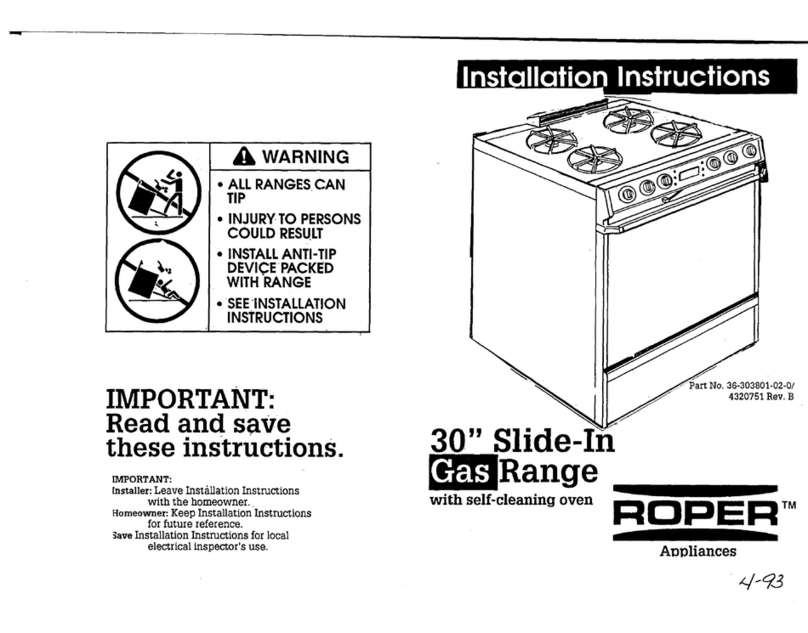
Roper
Roper Range User manual

Roper
Roper 9761805 User manual

Roper
Roper FGP325Y User manual

Roper
Roper FGP325G User manual


